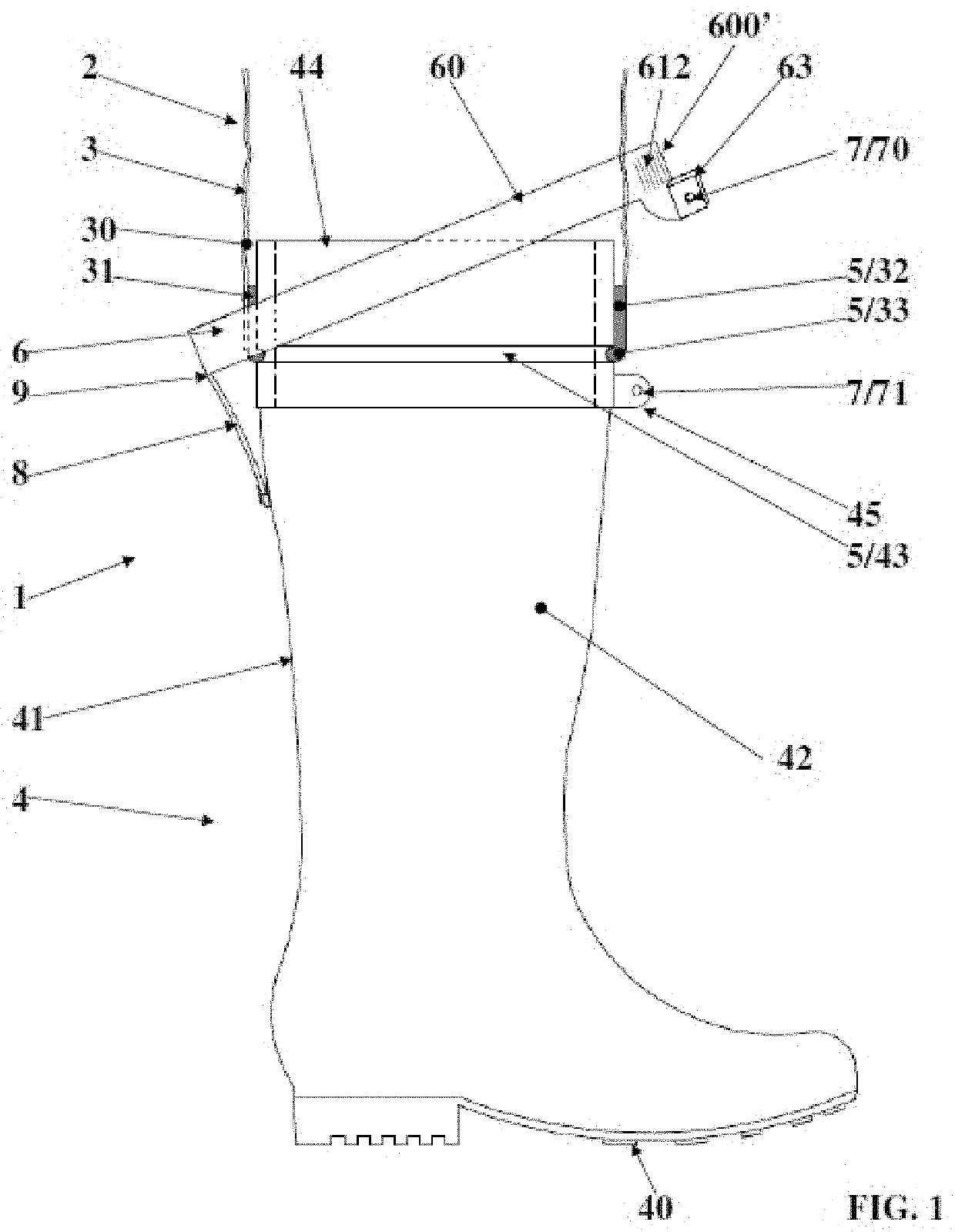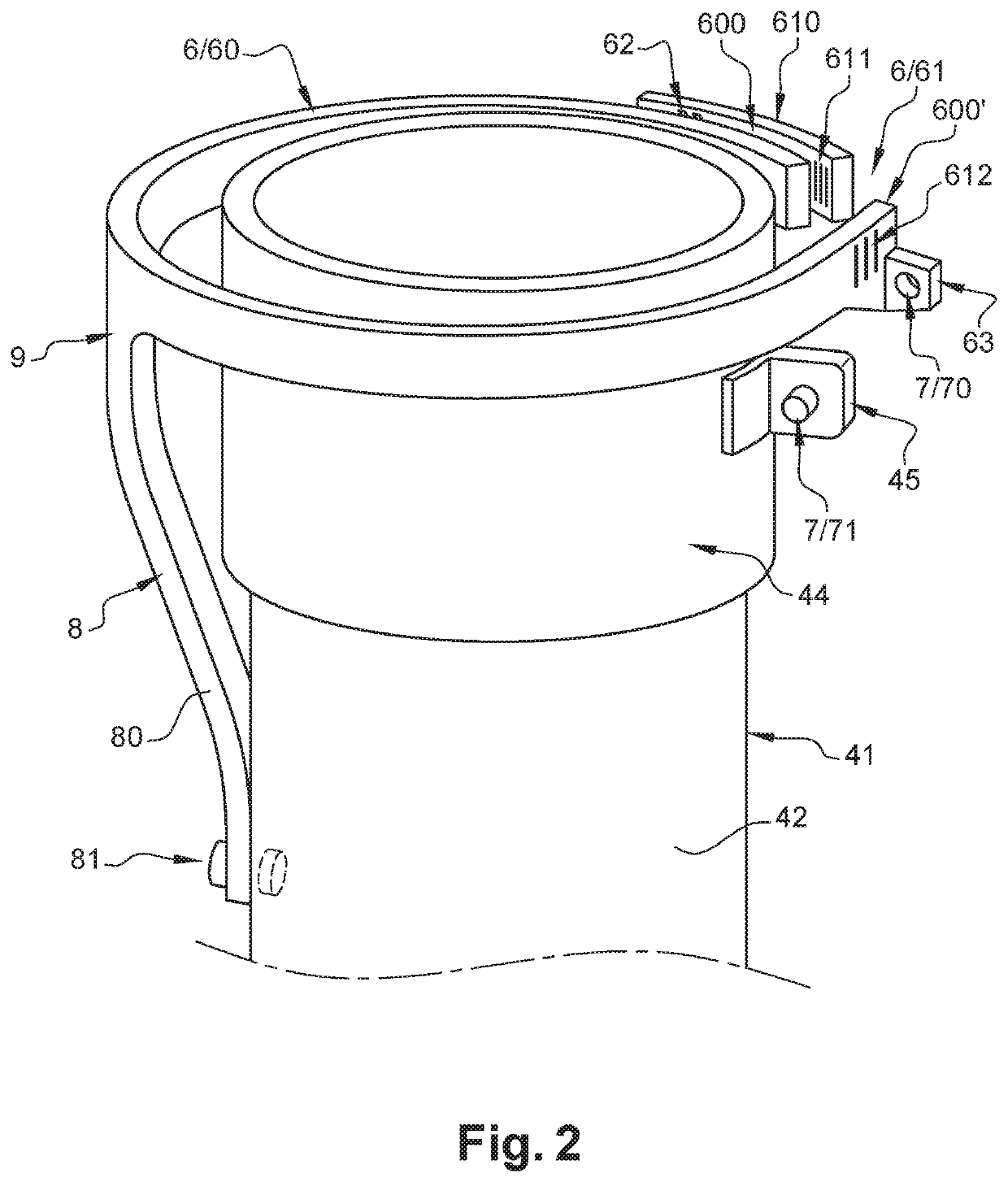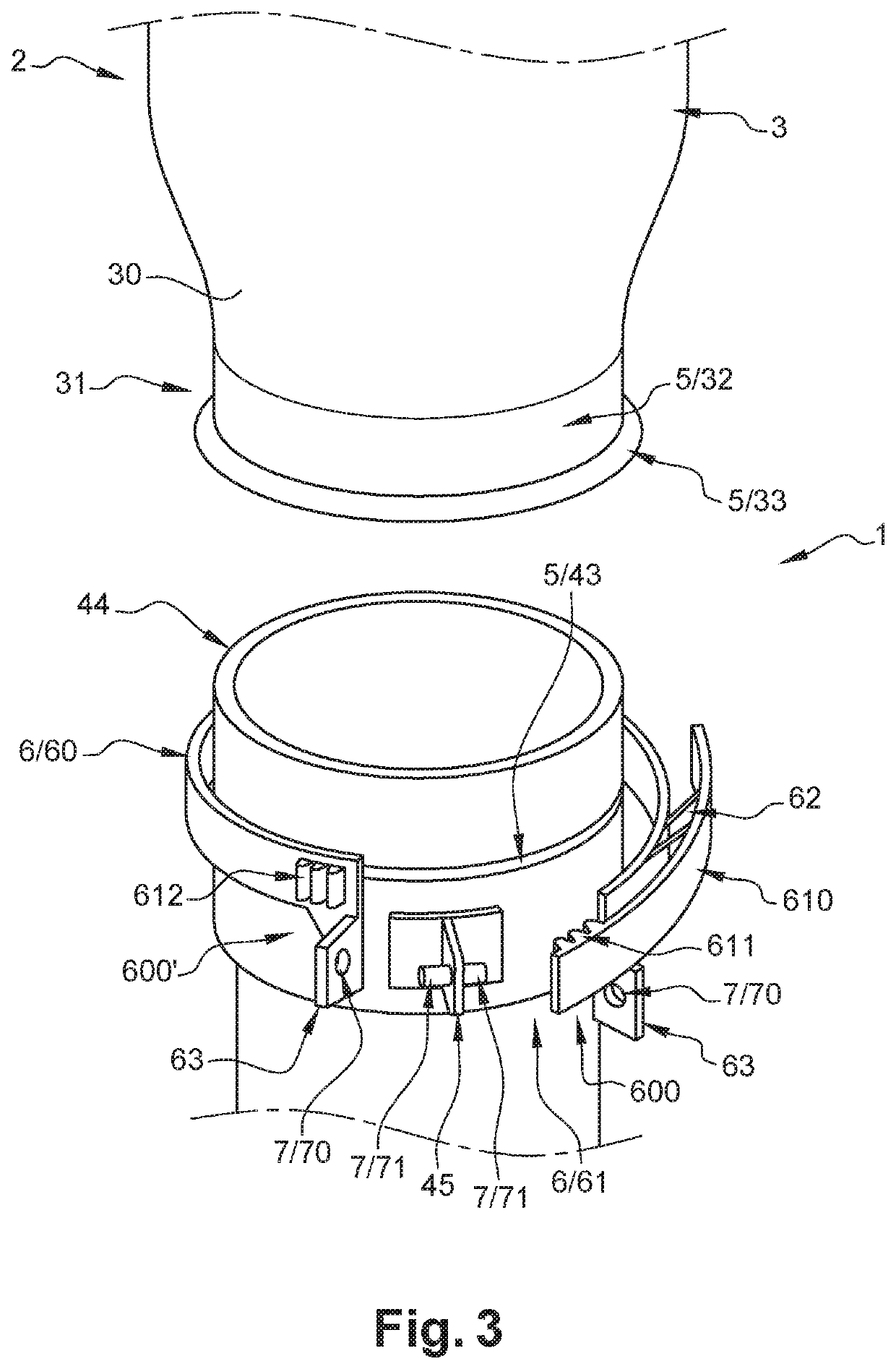Fishing garment
a garment and fish technology, applied in the field of fishing garments, can solve the problems of affecting reducing the effect of the garment, so as to achieve the effect of easy, appropriate and effortless, and strengthening the fastening
- Summary
- Abstract
- Description
- Claims
- Application Information
AI Technical Summary
Benefits of technology
Problems solved by technology
Method used
Image
Examples
Embodiment Construction
[0036]The present invention is related to the field of the manufacture of clothing for use in the context of the practice of fishing, especially in whitewater.
[0037]The invention therefore relates to a fishing garment 1, which is usually known under the Anglo-Saxon name of “waders”.
[0038]Such fishing garment 1 includes waterproof pants 2, which include two legs 3.
[0039]Each leg 3 includes waterproof leggings 30, more particularly constituted by a (namely waterproof) fabric and / or a (namely waterproof) web and / or a (namely waterproof) rubber.
[0040]Each leg 3 also includes a flange 31, which is tightly integral with the leggings 30, which this leg 3 includes, more particularly with a free end of these leggings 30. This flange 31 can also (and preferably) be waterproof. This flange 31 is preferably of the elastic type. According to a preferred embodiment, this flange 31 is formed of a waterproof rubber.
[0041]Such a flange 31 includes at least one sleeve 32. More particularly, such a sl...
PUM
| Property | Measurement | Unit |
|---|---|---|
| temperatures | aaaaa | aaaaa |
| water resistance | aaaaa | aaaaa |
| tensile stresses | aaaaa | aaaaa |
Abstract
Description
Claims
Application Information
 Login to View More
Login to View More - R&D
- Intellectual Property
- Life Sciences
- Materials
- Tech Scout
- Unparalleled Data Quality
- Higher Quality Content
- 60% Fewer Hallucinations
Browse by: Latest US Patents, China's latest patents, Technical Efficacy Thesaurus, Application Domain, Technology Topic, Popular Technical Reports.
© 2025 PatSnap. All rights reserved.Legal|Privacy policy|Modern Slavery Act Transparency Statement|Sitemap|About US| Contact US: help@patsnap.com



